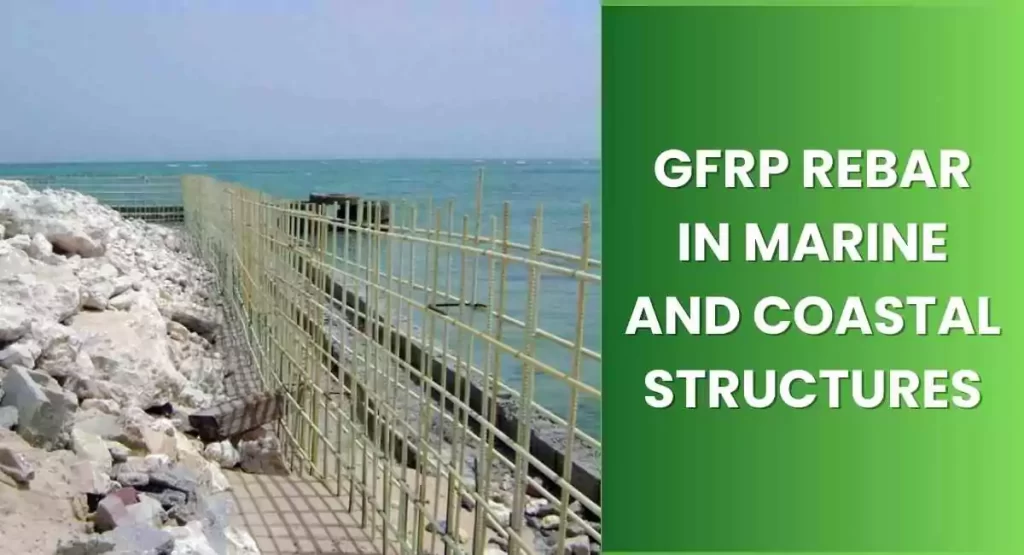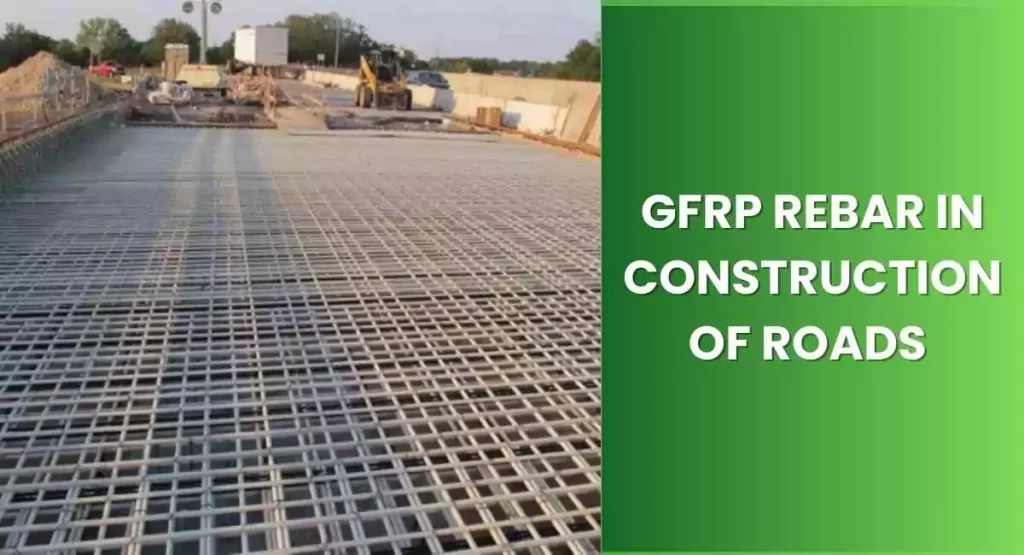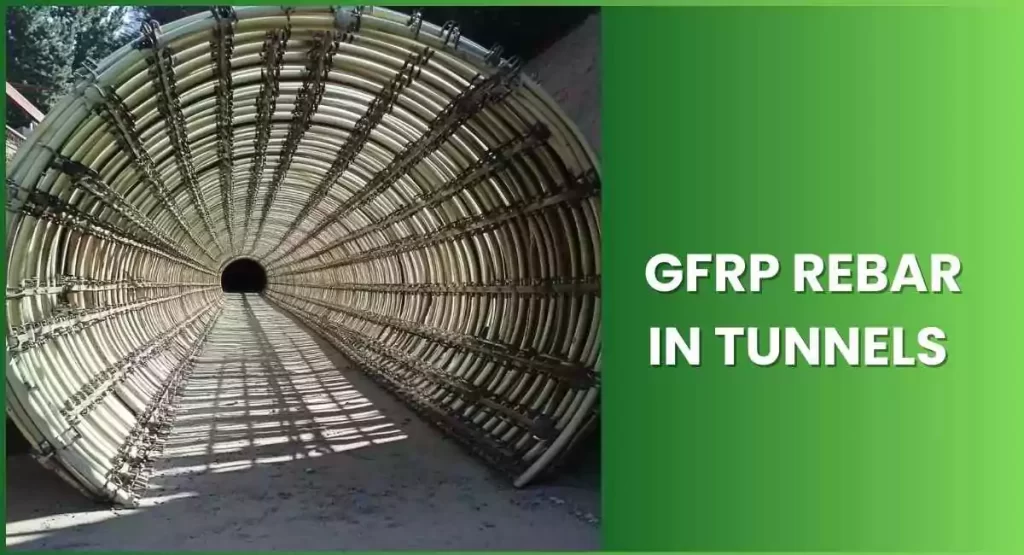Change is underway in the construction industry by new material designs and developments to be more reinforcing, cost-effective, and sustainable. Among these materials are gaining wider attention these days is Glass Fiber Reinforced Polymer (GFRP) rebar. According to a market analysis in 2023, the global GFRP rebar market is projected to reach USD 389 million by 2027 at a CAGR of 13.0% during the period from 2021 to 2027.
GFRP rebar is gaining recognition for its impressive strength-to-weight ratio as well as high corrosion resistance, thereby revolutionizing the way structures are built and maintained. GFRP rebars, or Glass Fiber Reinforced Polymer, serve as a high tensile-strength alternative to steel reinforcement and concurrently support greener and sustainable construction.
What is GFRP Rebar?
It is a composite material that consists of glass fibers combined with a polymer matrix. Glass fibers would give strength, while a polymer matrix is one that binds the fibers and protects them from environmental effects as well. Corroding steel rebar is a ticking time bomb but, unlike the traditional form of steel rebar, GFRP rebar does not corrode. It proves to be an excellent choice for the structures exposed to harsh environmental conditions.
Why Use GFRP Rebar in Construction?

GFRP rebar is gaining popularity in construction due to its capability of resisting corrosion. Steel rebar, on the other hand, tends to rust when exposed to moisture or chemicals. This process can compromise the overall strength over time. Structures that comprise steel rebar and are located in such environments begin their degradation processes after 10 years.
GFRP rebar, however, withstands the cyclic exposure of water and chemicals; hence, it is durable and less expensive to maintain. It is a reliable and durable replacement for the conventional reinforcement made of steel.
Applications of GFRP Rebar in Different Construction Projects
1. Marine Structures

GFRP rebar is widely used in marine structures, including docks, seawalls, and piers. All these structures undergo exposure to salt water throughout their life, which accelerates the corrosion of steel rebar. Using GFRP rebar improves the durability of marine structures, so they remain strong and safe for longer periods.
2. Bridges and Highways

Bridges and highways are also stressed by heavy loads and environmental stressors such as de-icing salts and extreme weather. In the infrastructures of the above, GFRP rebar is used to delete corrosion-related issues that arise with such constructions. For instance, when steel rebar corrodes, those concrete bridges deteriorate, making costly repairs and even replacement costs expensive. GFRP rebar avoids such problems, thus ensuring bridges and highways structurally last long.
3. Chemical Plants and Industrial Facilities
Chemical plants and industrial facilities expose the structures to various corrosive substances. GFRP rebar is an optimal reinforcement option for concrete in such environments. It is resistant to attack by aggressive chemicals without degradation and is thus ideal for tanks, flooring, and containment structures. This application minimizes the risk of structural failures and improves safety in industrial facilities.
4. Tunnels and Underground Structures

Tunnels and other underground structures often suffer from moisture and pH fluctuation, which causes corrosion of the steel rebar. The GFRP rebar incredibly reinforces these structures since it does not corrode with the effect of moisture and chemicals. Such application is very essential to ensure long-term durability and safety for tunnels, subway systems, and underground parking facilities.
5. Parking Structures
Parking structures are exposed to water, de-icing salts, and vehicular loads all the time that causes steel reinforcement to deteriorate. One great benefit of GFRP rebar in construction companies is that it reduces considerably the parking garage’s maintenance cost and supports the parking structure for a longer period. Being non-corroding by nature, GFRP rebar perfectly withstands the wear and tear of vehicles and environment conditions, which will ensure a long-lasting stable parking surface.
6. Residential and Commercial Buildings
Due to its lightweight properties and installation benefits, GFRP rebar is used in residential and commercial buildings in the bases, walls, and slabs. It saves a lot on time since it is much easier to install and thus energy efficient. Its resistance to corrosion ensures that structural elements of buildings do not wear out over time with consequential repairs and replacements.
How GFRP Rebar Helps in Construction Projects
Better Durability
High durability is another advantage of GFRP rebar. Conditions encountered by GFRP rebar reinforced structures are not likely to cause any damage. Hence, the service life is longer, and the cost incurred during maintenance is lesser. Structural integrity is intact in the case of GFRP rebar. This is a great advantage for coastal and industrial environments as corrosive elements cannot be avoided.
Lightweight
GFRP rebar is much lighter than steel rebar which means it is easier to handle and install. GFRP rebar is 4x lighter than steel rebar, 2x stronger than steel rebar, does not conduct heat, cold or electricity, substantially reduces workplace injuries, takes half the time to install with half the amount of people.
For example, during the construction of a bridge, the use of lightweight GFRP rebar will significantly accelerate the installation of reinforcement and, therefore reduce the timelines of the project. In high-rise construction, GFRP’s light-weight profile minimizes the total weight of the building and, thereby the design and construction method will efficiently utilize structural support systems.
Non-Conductive Properties
The GFRP rebar is non-conductive, which makes it suitable for applications requiring electro-magnetic neutrality. This is very useful in facilities like MRI rooms in which the presence of a metal inside will interfere with equipment function. Furthermore, in power plants and substations, high-voltage equipment are often used, the property of being non-conductive and nonmagnetic of GFRP rebar presents protection from unintended pathways of electricity.
Resistance to Thermal Variations
GFRP rebar has a high resistance to thermal variations, and as such is ideal for applications involving severe cyclic temperature fluctuations. Steel rebar expands and contracts significantly with temperature changes, potentially leading to cracking in the concrete; GFRP rebar’s thermal expansion coefficient is closer to concrete than to steel. Ideal for environments with extreme temperature cycles. This characteristic maintains the integrity of structures when exposed to a wide range of temperatures, such as bridges in cold climates or pavements in the desert regions.
Implementation of GFRP Rebar in Construction Projects
- Planning and Design: Appropriate application of GFRP rebar would always require consideration for structural engineers who understand the properties of the material. Proper planning and design ensure that all the benefits of GFRP rebar are achieved at their fullest; engineers can be of great help in guiding appropriate applications and integration methods for GFRP rebar.
- Training and Education: Training the construction crews on the handling and installation of GFRP rebar is important. It’s easier to handle than steel rebar, but it does require knowledge of the best ways to cut, bend, and tie GFRP rebar to ensure it goes in properly and performs well.
- Quality Assurance: Quality control of GFRP rebar is of paramount importance for the success of any construction operation. Source selection with reputed high-quality GFRP rebar suppliers and proper certification and testing ensure that the material used meets all industrial standards and performances as expected.
The applications are numerous and diverse, especially in a construction industry platform, as GFRP rebar offers many benefits. It is resistant to corrosion, lightweight in nature, and versatile-all the virtues that an ideal structure material needs, from marine environments to residential buildings.
So if you are looking for the best quality GFRP rebar, then opt for Dura Composite. We at Dura Composite envision to bring together technological and material-tech innovation in the building and construction material space and deliver quality products that are eco-friendly. Contact us today to learn more!
